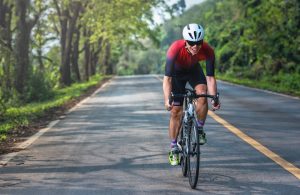Cycling in the City: Tips for Safely Navigating Urban Traffic

Cycling in the city offers a unique blend of challenges and rewards. While it’s an eco-friendly, healthy way to travel, navigating urban traffic can be daunting, especially in bustling cities like Dallas. This guide offers practical tips to help cyclists safely traverse city streets.
Understand the Traffic Flow
Familiarize yourself with the typical flow of traffic in your city. This includes understanding one-way streets, traffic signals, and common rush hour patterns. Knowledge of the traffic flow will help you anticipate and react to changes more effectively.
Be Visible
Visibility is key. Wear bright, reflective clothing and ensure your bike is equipped with lights and reflectors, especially if you’re riding in low-light conditions. This makes it easier for drivers to see you, reducing the risk of accidents.
Use Bike Lanes Wisely
When available, use designated bike lanes. However, be aware of parked cars that could obstruct your path and potentially open doors suddenly. If you must leave the bike lane to avoid hazards, signal your intentions to drivers and do so carefully.
Signal Your Intentions
Always use hand signals to communicate your intentions to drivers and other cyclists. This includes signaling turns and stops. Clear communication can prevent many accidents in busy urban areas.
Stay Alert
In an urban setting, it’s crucial to stay alert at all times. This means keeping an eye out for vehicles, pedestrians, and other cyclists. Avoid distractions like using headphones or mobile phones while riding.
Keep a Safe Distance
Maintain a safe distance from vehicles, particularly large trucks and buses that have larger blind spots. Also, be cautious when passing stopped vehicles or when riding near car doors.
Respect Traffic Laws
Obey all traffic signs and signals just as you would in a car. This includes stopping at red lights and stop signs. Respecting traffic laws not only keeps you safe but also promotes a culture of mutual respect between cyclists and drivers.
Be Prepared for Road Hazards
Urban roads can be full of hazards like potholes, glass, and uneven surfaces. Always be on the lookout for these hazards and navigate around them safely.
Consider Taking a Cycling Safety Course
If you’re new to urban cycling, consider taking a cycling safety course. Many cities offer these courses for free or at a low cost, and they can provide valuable skills and confidence.
Cycling in the city doesn’t have to be intimidating. With the right knowledge and preparation, you can enjoy a safe and efficient ride through urban landscapes. Remember, being a responsible cyclist not only protects you but also contributes to a safer environment for everyone on the road.
If you’re a cyclist in Dallas and have been hit by a vehicle, don’t hesitate to reach out to Cyclist at Law at 800-887-6188. We specialize in cyclist advocacy and can provide the legal support and guidance you need in these situations.
